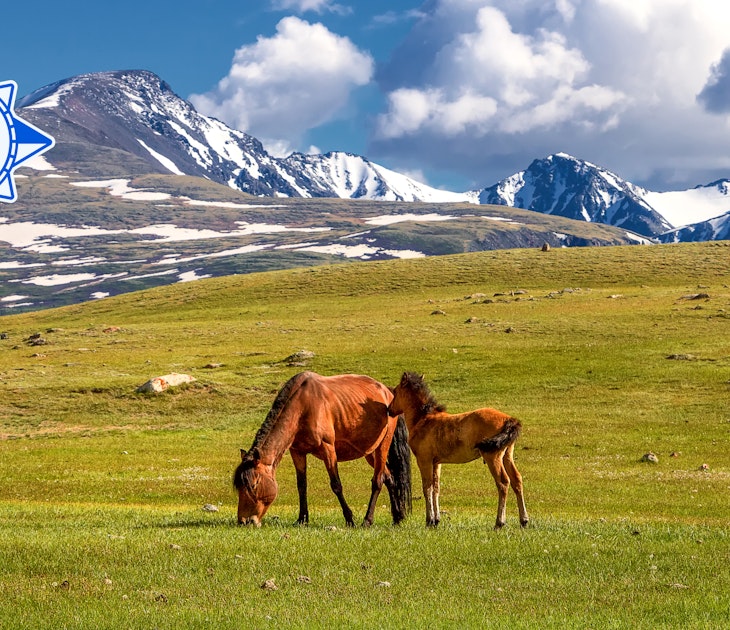
How wildlife is crossing the Trans-Mongolian Railroad for the first time in decades
Jul 8, 2020 • 2 min read

The first khulan to cross into the eastern steppe in Mongolia in 65 years © WCS Mongolia
- placement: fullWidth
- path: articles/in-content-top
- possible size: [970, 250], [970, 90], [728, 90], [300, 250], [320, 50], [1, 1],
- targeting:
{ "url": "trans-mongolian-railroad-wildlife-friendly-corridor", "destination": "Mongolia", "continent": "Asia", "country": "Mongolia" }
A photo has been released of the first Asiatic wild ass to cross into the eastern steppe in Mongolia in 65 years, thanks to the new wildlife-friendly fence corridor at the Trans-Mongolian Railroad. In addition to the ass, known as a khulan, Mongolian gazelle and goitered gazelle have been documented crossing the previously impenetrable barrier.
These nine wildlife web cams offer access to your favorite animals
Since completion of the Trans-Mongolian Railroad in 1955, khulan have been blocked from accessing what was their former range in the eastern grasslands of Mongolia. In addition, thousands of Mongolian gazelles become entangled in the corridor fencing each year, and many more starve after being prevented from reaching quality pasture during their nomadic movements. The new crossing is part of a project to create simple modifications to existing fence designs that run the length of the railroad. In this initial pilot phase, gaps at two locations now provide safe passage for khulan and other wildlife, with plans for more follow.
- placement: fullWidth
- path: articles/in-content-middle
- possible size: [970, 250], [970, 90], [728, 90], [300, 250], [320, 50], [1, 1],
- targeting:
{ "url": "trans-mongolian-railroad-wildlife-friendly-corridor", "destination": "Mongolia", "continent": "Asia", "country": "Mongolia" }

Habitat fragmentation, resulting from the onslaught of the construction of highways, railroads, and pipelines, is one of the leading contributors to biodiversity loss. The Gobi-Steppe ecosystem is one of the largest grazing ecosystems on the planet, and it's threatened with fragmentation due to the construction of new transportation corridors to facilitate international trade. The population of khulan in Mongolia is estimated to be around 60,000, and is classified by the IUCN as 'near threatened' with extinction. The population stronghold, centered in Mongolia's South Gobi Desert, had been steadily shrinking from habitat degradation and a growing tangle of development and population expansion across its former range.
- placement: native
- path: articles/in-content-native
- possible size: [f, l],
- targeting:
{ "url": "trans-mongolian-railroad-wildlife-friendly-corridor", "destination": "Mongolia", "continent": "Asia", "country": "Mongolia" }

“The documentation of the return of khulan to the eastern steppe is an event that should be heard around the world," says conservation director of the Wildlife Conservation Society, Dr Kirk Olson. "A seven-decade old barrier dividing one of the remotest places on the planet is coming down, and a starting point for reconnecting the Gobi-Steppe ecosystem and revitalizing the spectacular wildlife migrations that dwarf the more celebrated Serengeti ecosystem.”
The project has been implemented by WCS, and it released the photo, which was taken some 750km from Ulaanbaatar by one of 85 remote cameras set up along the railroad. Further information can be found on its website here.
You might also like:
A Canadian sparrow changed its tune - and the song went viral across the continent
These Galápagos tortoises have returned home after saving their species
- placement: fullWidth
- path: articles/bottom
- possible size: [970, 250], [970, 90], [728, 90], [300, 250], [320, 50], [1, 1],
- targeting:
{ "url": "trans-mongolian-railroad-wildlife-friendly-corridor", "destination": "Mongolia", "continent": "Asia", "country": "Mongolia" }
Explore related stories


 Family TravelLonely Planet writers look ahead to 2021 and the first trips they can take
Family TravelLonely Planet writers look ahead to 2021 and the first trips they can takeDec 18, 2020 • 11 min read

 Sustainable TravelHow artificial intelligence is helping these companies protect the world's wildlife
Sustainable TravelHow artificial intelligence is helping these companies protect the world's wildlifeSep 30, 2020 • 6 min read

 Wildlife & NatureThe travel memories that are getting Lonely Planet staff through lockdown
Wildlife & NatureThe travel memories that are getting Lonely Planet staff through lockdownApr 7, 2020 • 5 min read
 HistoryWinter on the steppe: why you should consider visiting Mongolia in low season
HistoryWinter on the steppe: why you should consider visiting Mongolia in low seasonJan 6, 2020 • 6 min read


